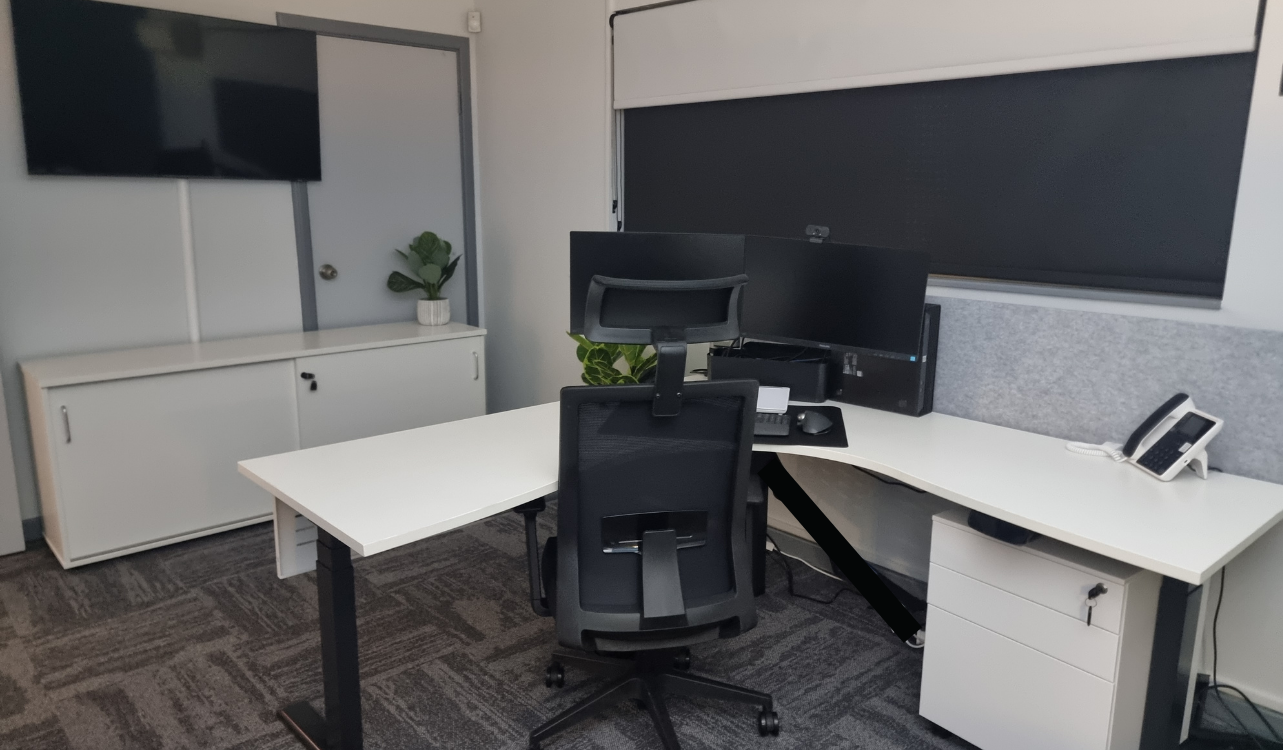Setting Up Your Standing Position with a Sit-Stand Desk
Setting Up Your Standing Position with a Sit-Stand Desk
A sit-stand desk offers the flexibility to switch between sitting and standing positions while working, promoting better posture and reducing the risks associated with prolonged sitting. Here's a step-by-step guide on how to set up your standing position effectively:
-
Adjust Desk Height:
- Begin by adjusting the height of your sit-stand desk to a level suitable for standing. Most sit-stand desks come with a motorized or manual height adjustment feature.
- Stand upright with your feet shoulder-width apart and your arms relaxed at your sides.
- Adjust the desk height so that your elbows are at a comfortable 90-degree angle when typing or using your keyboard.
-
Maintain Neutral Posture:
- Stand tall with your shoulders relaxed and pulled back slightly.
- Keep your head in a neutral position, aligned with your spine. Avoid slouching or leaning forward.
- Engage your core muscles to support your spine and pelvis in a stable position.
-
Position Monitor and Keyboard:
- Ensure that your computer monitor is positioned directly in front of you at eye level. Adjust the monitor height or use a monitor stand if necessary. If you are using two monitors, you want them to be together, and you can use the join as the centre if the monitors are the same size.
- Place your keyboard and mouse at a comfortable distance from the edge of the desk, allowing your arms to rest comfortably at your sides.
- Maintain a slight tilt in your keyboard to keep your wrists in a neutral position and prevent strain.
-
Distribute Weight Evenly:
- Stand with your weight evenly distributed between both feet. Avoid leaning to one side or putting excessive pressure on one foot.
- Shift your weight from one foot to the other periodically to reduce fatigue and improve circulation.
-
Take Breaks and Move:
- Alternate between sitting and standing throughout the day to avoid prolonged static posture.
- Take short breaks to stretch and move around regularly. Incorporate gentle exercises or stretches to relieve tension and improve circulation.
-
Listen to Your Body:
- Pay attention to how your body feels while standing. If you experience discomfort or fatigue, adjust your posture or take a break from standing.
- Experiment with different standing positions, such as shifting your weight or using a footrest, to find what works best for you.
-
Gradually Increase Standing Time:
- Start by standing for short periods, such as 15-30 minutes at a time, and gradually increase the duration as you become more accustomed to standing.
- Listen to your body and avoid standing for extended periods without breaks.
By following these steps and maintaining good posture and movement throughout the day, you can optimise your standing position with a sit-stand desk for improved comfort and productivity. Remember to adjust your setup as needed to accommodate your individual preferences and ergonomic needs. And make use of your memory settings!
- Choosing a selection results in a full page refresh.


